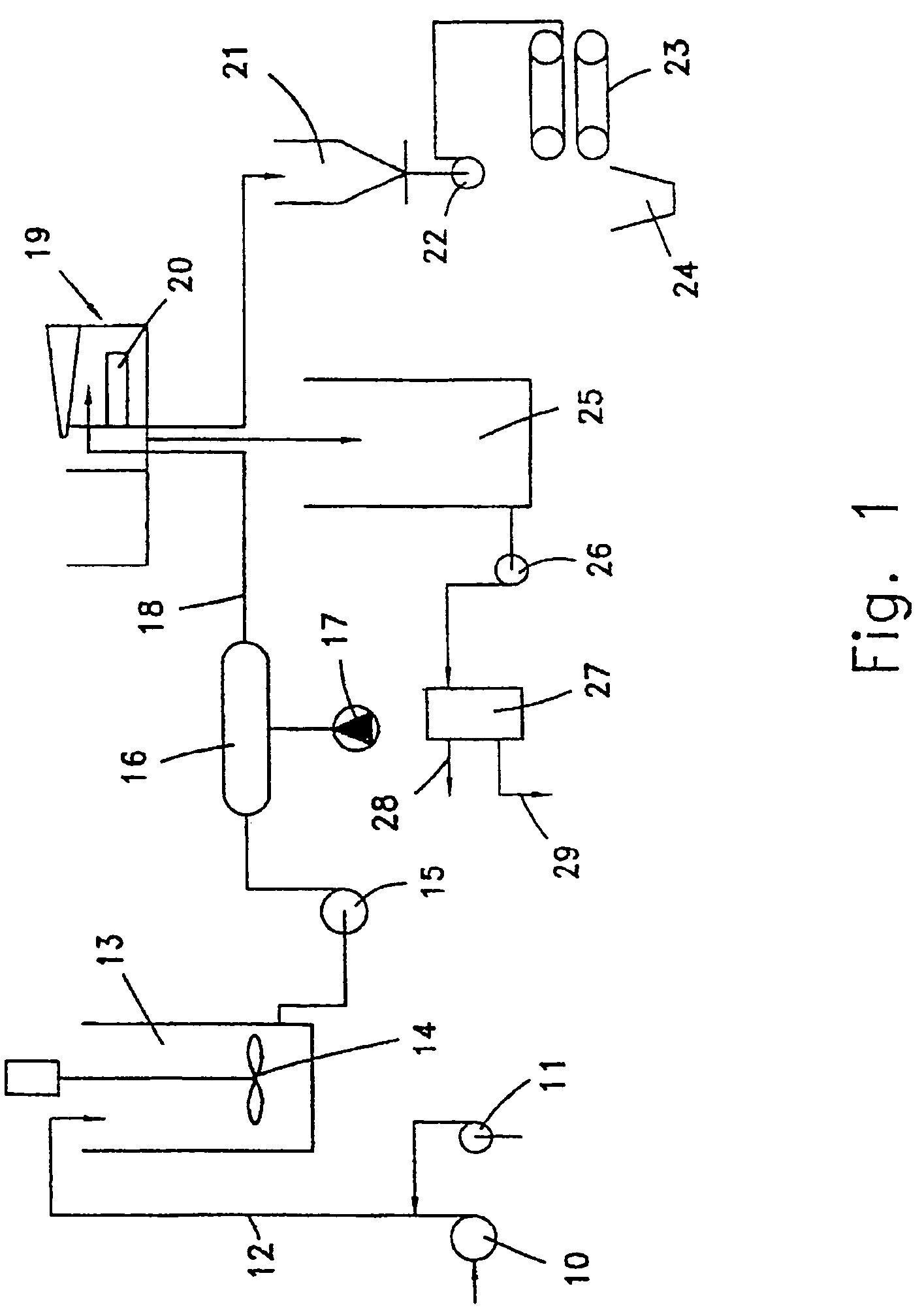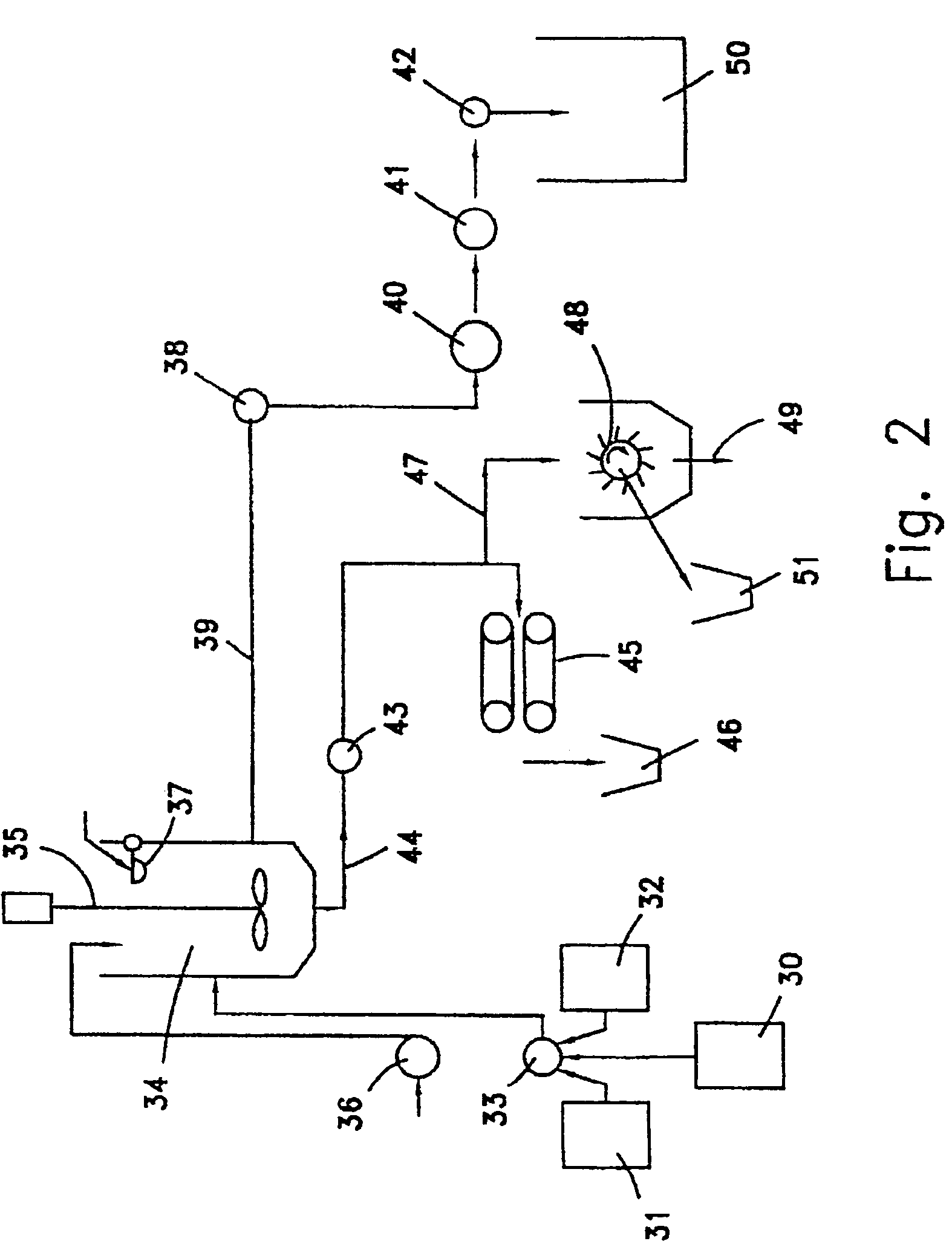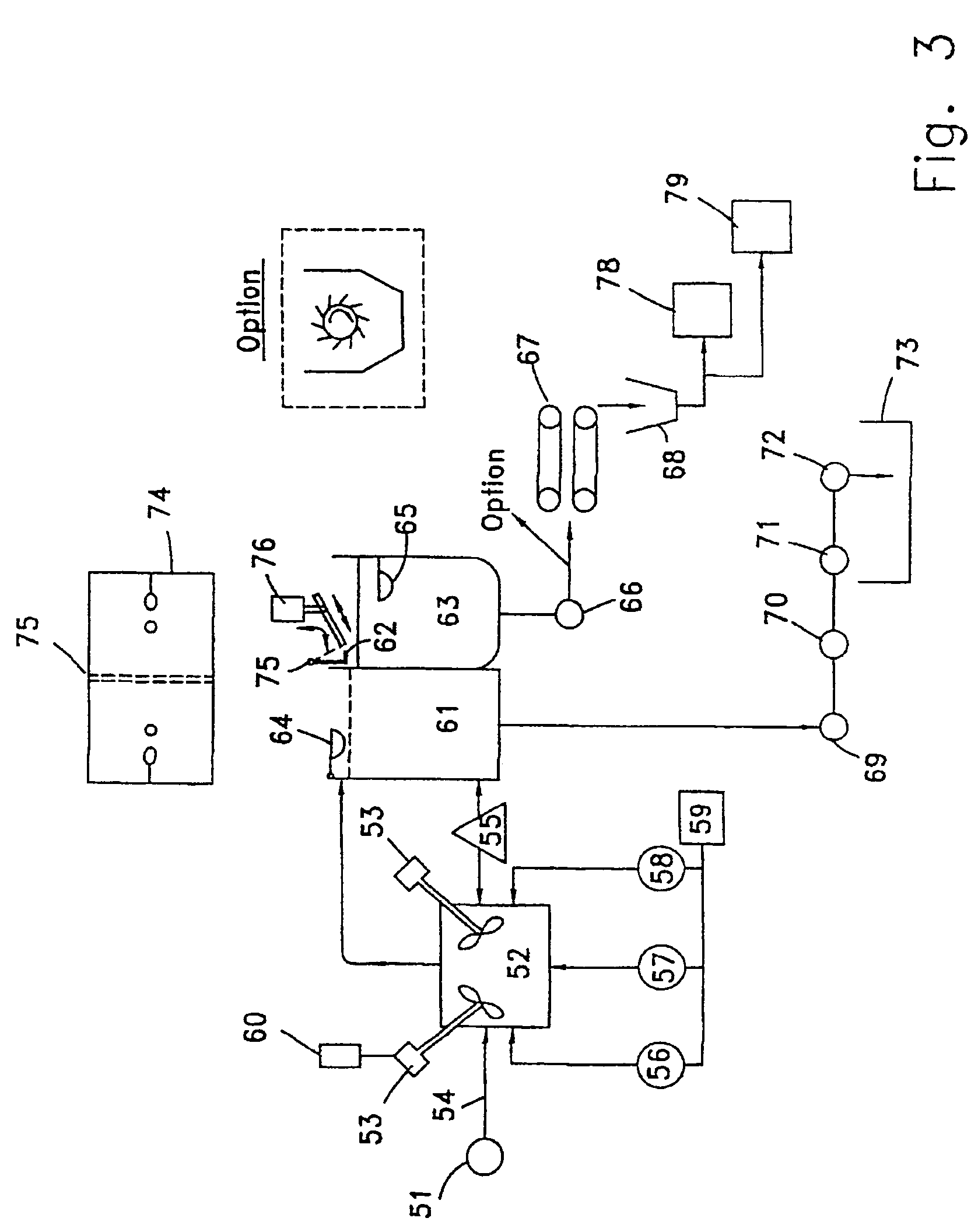Process and compositions for the purification of water
a technology of purification process and composition, applied in the direction of water treatment parameter control, separation process, evaporation, etc., can solve the problems of toxic properties, unknown selenium function in the removal of impurities of various kinds from contaminated waters, and the cost and limited applicability of known coagulants, etc., to achieve the effect of lowering the ph
- Summary
- Abstract
- Description
- Claims
- Application Information
AI Technical Summary
Problems solved by technology
Method used
Image
Examples
example 1
[0051]In contaminated water from Syncrude, Canada, the test showed 512 mV. The pH value was 9.
[0052]The SX (units of turbidity) value of the untreated water is defined by the formula:
[0053]SX=voltagewatervolume=mVcm3
[0054]The voltage is measured in mV. The water volume is calculated by multiplying the surface area of the solar cell by the height of the contaminated water. In this example and in the following ones the width of the solar cell is 3.6 cm, its length is 6.5 cm, so that its surface area is 23.4 cm2. The height of the contaminated water in the pyrex beaker is 0.9 cm. The water volume is 0.9×23.4 cm3=21.06 cm3. Therefore:
SX=512 / 21.06=24.31
[0055]At such a level of SX there is a need to use Selenox-B of both types I and II in the amounts of[0056]3.5 gr Selenox-B-I per liter of contaminated water[0057]3.5 gr Selenox-B-II per liter of contaminated water
[0058]After purifying the water with Selenox-B I and -II, sedimenting coagulant material and decanting, the level of SX turbi...
example 2
[0060]In contaminated water from Fine Tails of Oil Sand of Suncore, Canada (the pH of which was 7), the voltage, found in the turbidity test carried out as in Example 1, with the same equipment, was 512 mV. Therefore:
SX=512 / 21.06=24.31
[0061]The turbidity of the untreated water is the same as in Example 1, and, once again, there is a need to use Selenox-B of both types I and II in the amounts of[0062]3.5 gr Selenox-B-I per liter of contaminated water[0063]3.5 gr Selenox-B-II per liter of contaminated water
[0064]After purifying the water using Selenox-B-I and -II, sedimenting the coagulant material and decanting the water, the voltage was 565 mV and
SX=565 / 21.06=26.82. 26.82 units
example 3
[0065]The water to be purified was contaminated by sand and organic materials from a source of potatoes for the preparation of chips. The same equipment and the same method of the preceding examples were used to determine its turbidity. The pH was 7. The voltage found was 376 mV. Therefore:
SX=376 / 21.06=17.85
[0066]With such a turbidity level, Selenox-B-I must be used in an amount of 7.5 gr per liter of contaminated water and Selenox-B-II must be used in an amount of 7.5 gr per liter of contaminated water. The method of use is injection or addition of B-II, mixing for 5 seconds and afterwards, adding B-I and mixing for another 10 seconds. The process of creating the coagulant material continues for 2 to 5 seconds. Afterwards, the coagulant material was separated by a filter and voltage for the clean water was 567 and
SX=567 / 21.06=26.92
[0067]FIG. 1 schematically represents a water purification apparatus according to an embodiment of the invention, and schematically illustrates the corre...
PUM
| Property | Measurement | Unit |
|---|---|---|
| wt % | aaaaa | aaaaa |
| molecular weight | aaaaa | aaaaa |
| pore size | aaaaa | aaaaa |
Abstract
Description
Claims
Application Information
 Login to View More
Login to View More - R&D
- Intellectual Property
- Life Sciences
- Materials
- Tech Scout
- Unparalleled Data Quality
- Higher Quality Content
- 60% Fewer Hallucinations
Browse by: Latest US Patents, China's latest patents, Technical Efficacy Thesaurus, Application Domain, Technology Topic, Popular Technical Reports.
© 2025 PatSnap. All rights reserved.Legal|Privacy policy|Modern Slavery Act Transparency Statement|Sitemap|About US| Contact US: help@patsnap.com



